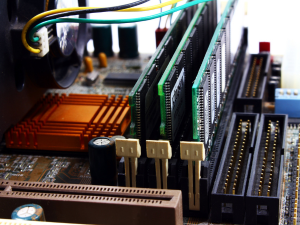
In the complex web of cybersecurity, where attention often gravitates towards software threats like malware, phishing, or DDoS attacks, a critical area frequently overlooked is hardware security. The escalation of Internet of Things (IoT) deployments has expanded the attack surface, providing cybercriminals with new avenues to exploit vulnerabilities that lie within the very physical components of our technology systems. For business owners, CEOs, and decision-makers in Austin, Round Rock, Georgetown, Taylor, Jarrell, and Cedar Park, Texas, it's imperative to broaden their cybersecurity focus to include hardware security measures to safeguard their operations effectively.
Unveiling Common Hardware Security Vulnerabilities
- Physical Tampering: One of the most direct forms of hardware compromise involves physical manipulation or tampering with devices. Such breaches can range from altering device ports to sophisticated interference with servers or storage systems. Vigilance and regular physical inspections of hardware can help detect signs of unauthorized access or damage, acting as a first line of defense.
- Default Passwords: A prevalent issue, especially with the proliferation of IoT devices, is the use of default factory-set passwords. These devices, integral to modern business operations, can become liabilities if their default passwords are not changed upon installation. Attackers often exploit these weaknesses, gaining easy access to business networks.
- Outdated Firmware: The firmware on which hardware devices operate can be riddled with vulnerabilities if not regularly updated. Manufacturers may release patches to address these issues, but without timely updates, devices remain exposed to potential exploits. Ensuring that all devices are operating on the latest firmware is crucial for closing security gaps.
- Custom Chipsets: While offering performance benefits, custom chipsets can introduce security risks, particularly if they haven't undergone thorough security reviews. The reliance on manufacturers to provide timely updates for these components can leave businesses vulnerable to zero-day exploits. Evaluating the security commitments of chipset manufacturers is essential for maintaining a secure IT environment.
Proactive Steps Towards Hardware Security
For businesses looking to fortify their defenses against hardware-related vulnerabilities, here are actionable strategies:
- Conduct Regular Hardware Inspections: Implement a routine check to identify any signs of tampering or unauthorized access to your devices. This includes looking for loose wires, missing screws, or any unusual physical damage.
- Update Default Passwords: Make it a standard procedure to change the default passwords of all new devices before integrating them into your network. This simple step can significantly reduce the risk of unauthorized access.
- Stay on Top of Firmware Updates: Allocate responsibility within your IT team to monitor and implement firmware updates for all hardware components. Regular updates are vital for patching vulnerabilities and enhancing device security.
- Evaluate Chipset Security: Before incorporating custom chipsets into your IT infrastructure, thoroughly assess the manufacturer's security track record and update policies. Opt for manufacturers with a strong commitment to security and regular updates.
Moving Forward
In today's digital age, where technology is intricately woven into the fabric of business operations, overlooking any aspect of cybersecurity can have dire consequences. By extending cybersecurity measures to include hardware security, businesses can create a more resilient defense against the evolving landscape of cyber threats. For business leaders in Central Texas and beyond, understanding and mitigating hardware security vulnerabilities is not just a technical necessity but a strategic imperative to protect their operations, reputation, and bottom line.
